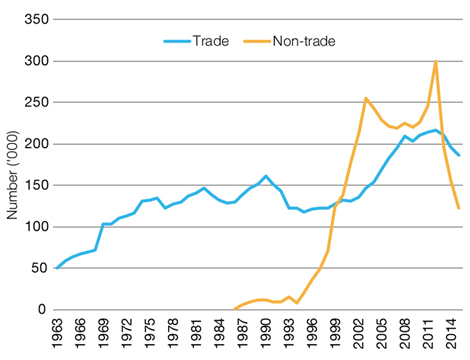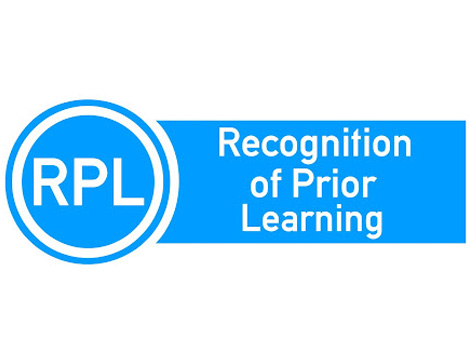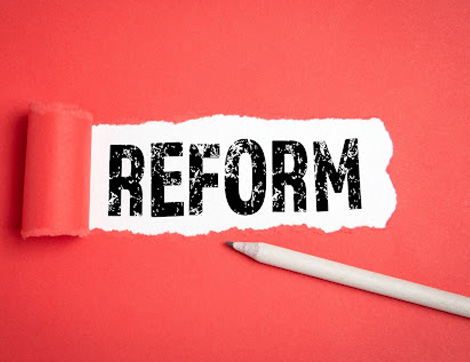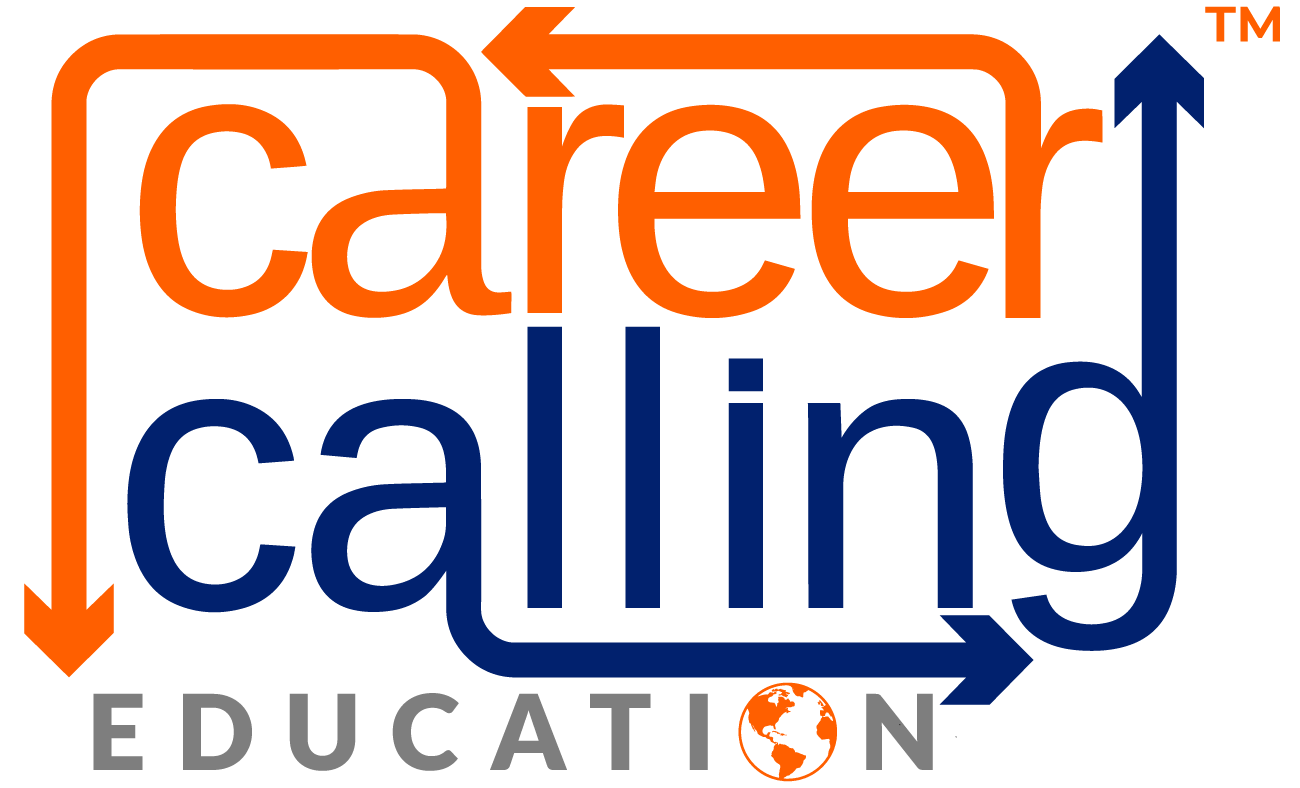
The drop in traineeships and apprenticeships. Why is it happening?
A recent figures revealed that the federal government over the last five years has underspent close to $1 billion of its budget on TAFE, training and apprenticeships. This is on top of previous cuts.
At the same time, that these budgets cuts are happening, Australia is still experiencing critical skills shortages in several industries. A number of experts have warned of serious effects on the Australian economy.
The report released by the Australian Industry Group can be found here: www.aigroup.com.au
It also identified:
- Skills shortages: 75 percent of respondents reported skills shortages in industry, a jump from 49 percent in the previous survey conducted in 2016. Shortages are most often in the technician and trades worker category, with difficulties recruiting for Science, technology, engineering, and mathematics (STEM) skills, and new shortages for roles in business automation, Big Data and artificial intelligence solutions.
- Literacy and Numeracy: 99 percent of employers (up from 96 per cent in 2016) are affected in some way by low levels of literacy and numeracy in their workforce. This is disturbing in a time when the workforce increasingly requires foundation skills that include not only literacy and numeracy but digital literacy and advanced soft skills.
- Leadership and Management: employers are prioritising technology capability improvements for managers, 62 percent of whom believe a lack of leadership and management skills is having a high impact on the business (up from 56 percent in 2016). This reflects the major changes needed in the way work is done and managed as entire business processes and organisational cultures are upended in the digital economy.
At the time of its 2018 survey, Ai Group called for new approaches to education, training and re-skilling to maximise the benefits of the digital economy.
“Our survey has found major skills demand issues facing employers,” chief executive Innes Willox said.
“It provides an important gauge of employer sentiment around skill needs, education and training at a critical time for industry transformation.”
Image Source: NCVER, Apprentices and trainees 2015 December quarter

The number of Australians completing an apprenticeship or traineeship is lower today than it was a decade ago.
Let’s look at the apprentices and trainees data now over the last few years.
Since 2013, according to data compiled by the National Centre for Vocational Education Research (NCVER), apprentice numbers have dropped by 25 to 50 percent.
The number of apprentices and trainees who commenced training in September 2013 dropped by 49.56 per cent from 71,600 to 36,115 by September 2017.
The number of apprentices and trainees who were in training during this same period dropped by 34.7 percent from 413,300 to 269,905.
Apprentice and trainee completion rates from September 2013 also dropped from 35,900 by 35.86 per cent to 23,025 by September 2017.
The figures from NCVER to the end of December 2018 show the number of apprentices and trainees who commenced training dropped from 71,600 in September 2013 to 33,760 in December 2018, representing a 52.85 per cent fall.
The number of apprentices and trainees in-training dropped from 413,300 in September 2013 to 259,385 in December 2018, resulting in a 37.24 per cent reduction during the time period.
The number of apprentices and trainees who completed their training in September 2013 dropped from 35,900 to 26,780 in December 2018.
What are the reasons for this fall in numbers? Some of the factors are:
- Government policies reducing the subsidised training courses offerings
- Focusing on public education and training organisations and neglecting the private education providers
- Too many expectations from employers and not enough rewards,
- No effective education and training reforms No or less engagement of group training organisations
- Too much bureaucracy and paperwork
- Ineffective In-School VET programs
- Few Multi-Industry Pre-Apprenticeship programs
- A regulator that does not understand the changing needs of the time and learners or
- A mix of all these factors?
We believe the more investment in the public and private training and education organisations and policy and regulatory changes are the only ways to move forward.
5 years ago
Related News

11 September, 2018
Victorian TAFE free-for-all – is it beginning of another “Crisis”?
From January 2019, the Victorian Government will cover the cost of 30 TAFE courses and 18 pre-apprenticeship courses. The free courses run for up to two years and include accounting, agriculture, construction, plumbing, engineering and nursing. The free TAFE courses Non-apprenticeship courses Apprenticeship pathway courses Accounting, Certificate IV/Diploma/Advanced Diploma Automotive Air Conditioning Technology, Certificate II Ageing Support, Certificate IV Automotive Body Repair Technology, Certificate II Agriculture, Certificate II/III/IV […]
6 years ago

18 November, 2019
Where are we going and why are we here?
If you have followed the recent discussion on social media ASQA’s practices, RTO closures, TAFE non-compliance, rorting of government funding (by now this is historical data being republished) it is one thing that stands out; students are not part of the discussion. How did we arrive where we are at this point in time? ASQA […]
5 years ago

3 December, 2019
The drop in traineeships and apprenticeships. Why is it happening?
A recent figures revealed that the federal government over the last five years has underspent close to $1 billion of its budget on TAFE, training and apprenticeships. This is on top of previous cuts. At the same time, that these budgets cuts are happening, Australia is still experiencing critical skills shortages in several industries. A […]
5 years ago

22 August, 2021
RPL Kits-Let’s discuss compliance with clauses 1.8 and 1.12
The legislative requirements The legislation is very clear regarding compliance in RPL kits and why you need to have RPL Kits for every unit of competency you are training and assessing. The legislative instrument includes the following clauses: Assessment 1.8. The RTO implements an assessment system that ensures that assessment (including recognition of prior learning): […]
3 years ago

22 August, 2021
Education standards and politics
We are all well aware that in any country, it is hard to separate politics from educational issues and standards. However, it is quite sad when politics begins to have an impact on education for a variety of negative reasons. Educational standards should be upheld at all times, but using education to score political goals, […]
3 years ago

19 September, 2021
Resource Validation Services: Why outsourcing can be a great option
Following the National Vocational Education and Training Regulator Amendment (Governance and Other Matters) Bill 2020, ASQA has made a significant upgrade to the architecture of the vocational education and training (VET) sector and its approach. The rapid change roadmap includes strengthening ASQA’s strategic stakeholder engagement and education to build provider capacity for self-assurance. In line […]
3 years ago

24 March, 2022
How to ensure your training organisation is compliant with government regulations
If you’re running a vocational education and training organisation in Australia, you need to ensure that your organisation is compliant with government regulations. This article will outline some of the regulations that you need to be aware of, and provide tips on how to ensure compliance. The Australian Skills Quality Authority (ASQA) The Australian Skills […]
3 years ago

17 July, 2022
Some potential challenges with “fee-free TAFE”
Challenges associated with “fee-free” training Recently, the vocational education and training (VET) sector have seen an increase in fee-free training. In this scenario, a government body pays the fees for training, so that students do not have to pay any fees or only pay minimal administration charges. Despite it sounding like a great idea, this […]
2 years ago
Archives
- July 2022
- June 2022
- May 2022
- April 2022
- March 2022
- February 2022
- January 2022
- December 2021
- November 2021
- October 2021
- September 2021
- August 2021
- July 2021
- June 2021
- May 2021
- April 2021
- March 2021
- December 2020
- November 2020
- May 2020
- February 2020
- December 2019
- November 2019
- October 2019
- September 2019
- August 2019
- July 2019
- May 2019
- April 2019
- March 2019
- December 2018
- November 2018
- October 2018
- September 2018
- August 2018
- July 2018
- June 2018
- May 2018
- November 2016
- October 2016

Sukh Sandhu
Chief Executive Officer
Sukh has been working in the VET and Higher Education Industry for over 20 years. In this time, he has held several roles with RTO’s including CEO roles for International Colleges and National Compliance and Quality Assurance Manager roles for several RTO’s, TAFE’s and Universities. Sukh has also worked for ASQA as a Business Systems Project Official.
Sukh has had extensive project management experience in risk management, compliance, administration and as a training consultant. He has extensive knowledge in government compliance standards and has participated in nearly one hundred audits across Australia and provided consultancy advice regarding ASQA/VRQA, TEQSA, ACPET, DET-HESG, VQF/Higher Education, ELICOS, NEAS, ANMAC, AHPRA, CRICOS, ESOS and ISO.
Sukh is a member of several independent professional organisations and government bodies including, ACPET, VELG, ACS, AITD, MARA, MIA, ISANA, APEX, IEEE, The Internet Society (Global Member), AISIP, IAMOT, ACM, OISV, APACALL, IWA, Eta Kappa Nu, EDSIG and several others.

 Enrol Now
Enrol Now Info Pack
Info Pack










